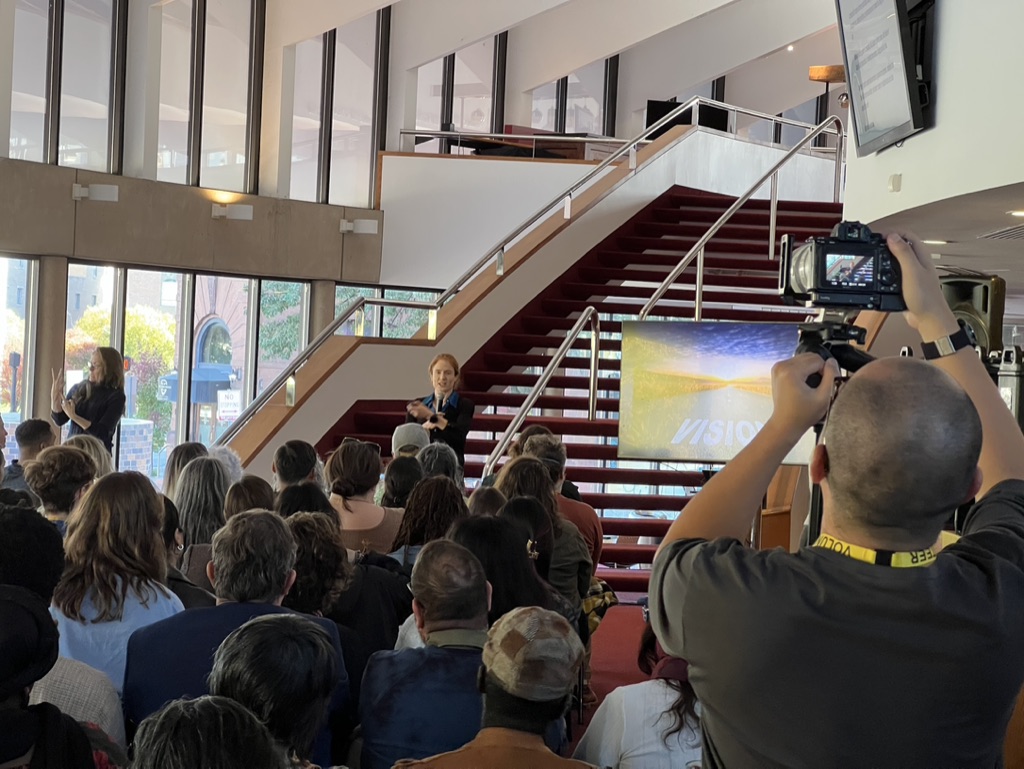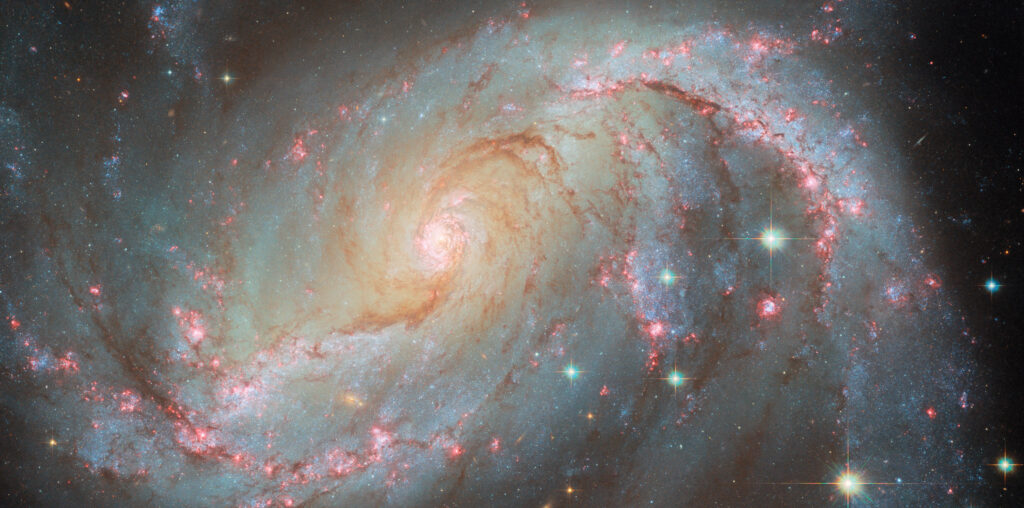The cosmos may feel totally inaccessible to the average human, that reminder of an infinite expanse that looks cool to everyone but can only be understood by solitary geniuses.
Julia Roman-Duval sees outer space differently. The astronomer at the Space Telescope Science Institute (STScI), the Johns Hopkins– and Hampden-headquartered operations center for NASA’s top telescopes, sees links to athletics and daily human functions. And through it all, she believes collaboration makes the field better.
“For astronomy, the field now is so broad and so deep that you cannot be an expert at everything. … And different wavelengths will also be kind of matrixed with that because they give you different kinds of information about the nature of those different objects,” Roman-Duval explained. “I think the key to this is collaboration and being surrounded by the experts. You need to understand the big picture of what’s happening.”
Roman-Duval said this in a talk bringing astronomy, running and life lessons together for Creative Mornings Baltimore’s October event. The Joseph Meyerhoff Symphony Hall, home of the Baltimore Symphony Orchestra, played host to this latest edition of the free breakfast lecture series, in which experts and leaders from different fields briefly talk about their work.

As someone who spends her time overseeing billion-dollar instruments and teams studying the farthest observable sections of the universe, Roman-Duval was uniquely positioned to speak on the event’s theme of “vision.”
Between slides depicting supernovas, galaxies, key figures in the field of astronomy and the three telescopes under STScI’s purview — the Hubble, James Webb and to-be-launched Nancy Grace Roman (no relation) Space Telescopes — she highlighted the similarities between the human eye and telescopes. Our eyes, which can only see a small portion of the light spectrum, take in multiple types of light for a full picture of our surroundings. Telescopes are similar, but they are equipped to detect a much broader range of light, which enables researchers to observe many different phenomena.
As Roman-Duval neared the end of the analogy, a moment of suspended silence in the audience begged for the analogy to continue: Much like eyes are to an individual, are telescopes, like Hubble and James Webb, the eyes for humanity as a species? And what does it say about who we are?
Roman-Duval’s core message as it relates to vision: The importance of collaboration and community.
Much like how telescopes take in a wide variety of types of light, astronomy has advanced only because of the collective efforts of teams of researchers working together, she said. Roman-Duval pointed out how previously, advancements were made by individual researchers like “Newton and Einstein.” However, in the last century, progress in astronomy has been increasingly achieved by teams of researchers and departments scattered across the world.
Further, an operation as complex as a telescope can only be achieved through collaboration. Roman-Duval referenced Nancy Grace Roman, NASA’s first chief astronomer for whom the Roman Space Telescope, which launches in 2027, is named.
“She had a vision for the large space telescope, which now we know as the Hubble Space Telescope,” Roman-Duval noted. “She lobbied to get early funding to develop a space telescope. She really made the vision of that come true.”
“I think those three telescopes [were] the result of a shared vision,” Roman-Duval continued, “and it really demonstrates what can happen when we all have buy-in as a community.”
Roman-Duval’s athletic life also attests to this. The one-time Baltimore Marathon winner discussed how she first competed at the Olympic Trials, noting how the number of women who qualified went from 200 in 2016 to more than 400 in 2020.
“It’s more than supporting each other,” Roman-Duval said of this process.”We motivate each other, right? We learn training, tips, things about anatomy. We come back to this community aspect of running that’s really key to making it a happy experience, but also a method to becoming stronger and faster.”
Moreover, she said, pros don’t train by themselves.
“They have groups that are organized and structured,” she said. “When women started to get together, training together, they made each other faster, and so the times just skyrocketed. And that doesn’t happen by chance: it’s because they were together, in part.”
None of this, from humanity studying the cosmos with billion-dollar instruments to the popularity of women’s running at the Olympic Trials, would be possible without those who invited others into the overall vision. And for that, community is integral.
With a collective set of three breaths, this group of humans in Meyerhoff Hall, on one tiny but significant blue rock tucked off to the side of the Milky Way, having seen photos of celestial neighbors and briefly recalibrated the size of ourselves, stepped back outside to the crisp fall weather to begin their Friday morning. For a fleeting moment, I considered running home.
Creative Morning Baltimore’s next speaker will be Joy Davis, on Nov. 22 at 8:30 a.m. at the Westside Open Works on Coppin State University’s campus. The Waller Gallery founder and Creative Alliance’s visual arts director will speak on the theme “Thread.” Learn more about the organization and find ways to get involved at its chapter website.

